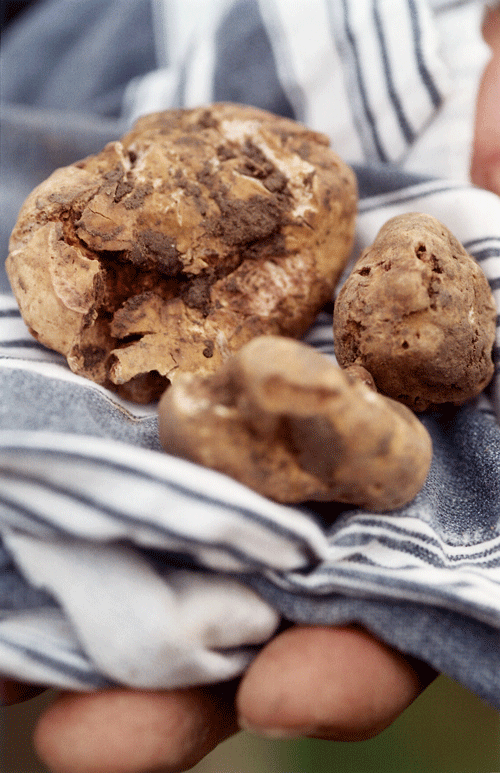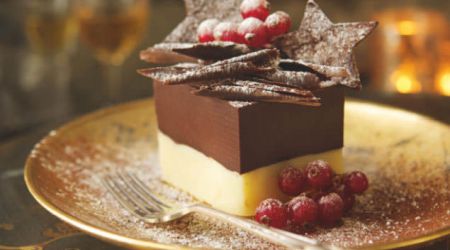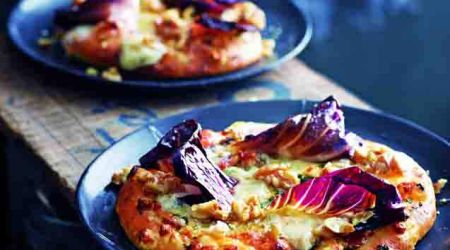Truffles
Aromatic and earthy, truffles bring brief, exquisite pleasure to the autumn menu. Helen Hokin explains the timeless appeal of the fine-flavoured fungi with recipes by Linda Tubby
How to make yourself a small fortune this autumn? Take a spade, a sniffer dog and yourself to Wiltshire, where it’s believed that there is a bumper crop of ‘black diamonds,’ otherwise known as the English or summer truffle (Tuber aestivum), lurking beneath the earth. A lucky find and you could be pocketing up to £130 a kilo. And you’ve got until late November to hit the jackpot.
This summer’s biblical-style deluge means that instead of sinking deeper underground in search of water, our native truffle, harvested on our soil for more than 300 years, is closer than ever to the earth’s surface. But as long as they remain buried treasure, their scent is undetectable to the human nose, making them notoriously hard to find. Beech, oak and birch trees growing in copses and woods are likely to have truffle growing among their roots; a proliferation of wild white raspberries is a sure sign there are black beauties underfoot; a cluster of withered mushrooms means start digging. Like mushrooms, there are poisonous varieties of truffle, too, so always go with an expert.
The English truffle ranges from the size of a walnut to the size of a peach, is round, black and knobbly on the outside and brown within. It has a highly distinctive, earthy aroma. But when it comes to intensity of flavour, there’s no denying our home-grown variety is a humbler version of its legendary European siblings. The famous black Périgord truffle (Tuber melanosporum) only grows among the roots of oak trees, is available from mid-November until the end of winter, and commands up to £1,000 a kilo. It is both cultivated and found growing wild, mainly in France, Spain and Italy, and is valued across the globe for its heady, mushroom-like aroma and deep earthy flavour.
The Italians, meanwhile, have paid annual homage to their indigenous white truffle since 1923 by means of a White Truffle Festival held every weekend throughout autumn in the town of Alba. The white truffle can grow to the size of a potato, and is considered to have a more complex but subtle aroma than the black variety: peppery, garlicky, celery-like, but equally reminiscent of the musky, mulchy earth it comes from. It can fetch up to a whopping £2,000 per kilo. Scarcity in Europe (it has only ever been found in Piedmont and Istria), coupled with failed attempts to cultivate it, have only served to push prices higher.
But what exactly are they and why the fuss? Truffles are a sort of subterranean fungi, one of the oldest vegetables, and due to their scarcity, the most expensive known to us. As much a delicacy in ancient Greek and Roman times as they are now, they were also a puzzle: without root or stalk, how did they come to be? The Greeks decided that a truffle appeared wherever lightning struck the ground. It wasn’t until 1851 that mycologist Edmond Tulasne discovered that they grow symbiotically with trees. Their underground growth is the result of adaptation to forest fire, drought and extreme cold.
Their exotic aroma and aphrodisiac quality eventually proved too much for the medieval church in Europe, which branded them ‘witches’ fare’ and forbade their use in monastery and convent kitchens. Monks who ate truffles were not held accountable for breaking the vow of chastity. Eventually, Gallic gourmand Louis XIV put them back on Europe’s culinary map, and our continental neighbours haven’t looked back since. Every year, as the season rolls around, Europe’s glitterati flock to upmarket restaurants for their annual fix. For this brief period whole menus are dedicated to the pungent treasure. Rome’s famous Hassler restaurant, for instance, goes all out and celebrates with a complete white truffle menu, starting with scrambled egg emulsion and white truffle and rounding off with white truffle ice-cream.
Here in Britain we’re still playing catch up. Truffles are hardly known, let alone eaten by the majority of the population. But now, with our own official supply, what’s to stop a little truffle-tasting ourselves? If the average restaurant price for a plate of spaghetti tartufi (about £60) is beyond your range or comprehension, you could always have a go at creating your own truffle delicacies at home. Scour top-end food halls and gourmet food websites to have a gram of fresh truffle delivered to your door. When it arrives, peel back the wrapper and inhale deeply; in no time its heady aroma will envelop your kitchen.
When cooking with truffles it’s best to keep it simple; the unique flavour and smell speak for themselves. A mere sliver of a shaving is often all that’s required for full impact. The Italian white truffle, shaved raw, works with pasta, eggs, butter, cream, white meat, walnuts, risotto, Parmesan, bitter greens and cured meats. The Italians even eat slivers of it with good white bread and a glass of crisp white wine. Black truffles sliced finely into the eggs for an omelette or shaved over a risotto take a lot of beating. Truffle-infused oils are best drizzled over fish and salads, but beware – their delicate structure is destroyed when heated. And once your feast is prepared, be sure to bring out the best linen and crockery; after all, you won’t be cooking with truffles every night.

Recipes
Get Premium access to all the latest content online
Subscribe and view full print editions online... Subscribe


